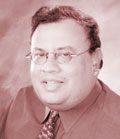Now that the Supreme Court has issued its opinion in KSR v. Teleflex, the first reaction is what took it so long? During the past six months since oral arguments in late November, I was expecting that the Court was taking its time crafting a historical opinion that delved into the genesis and evolution of the nonobviousness doctrine since the Hotchkiss decision in 1851. The Court does mention the Hotchkiss decision and a few others, but the six month gestation has yielded a compact, thirty page decision that can be summarized with three simple F-words: formalism, functionality, and flexibility.
To continue reading, become a Patently-O member. Already a member? Simply log in to access the full post.
